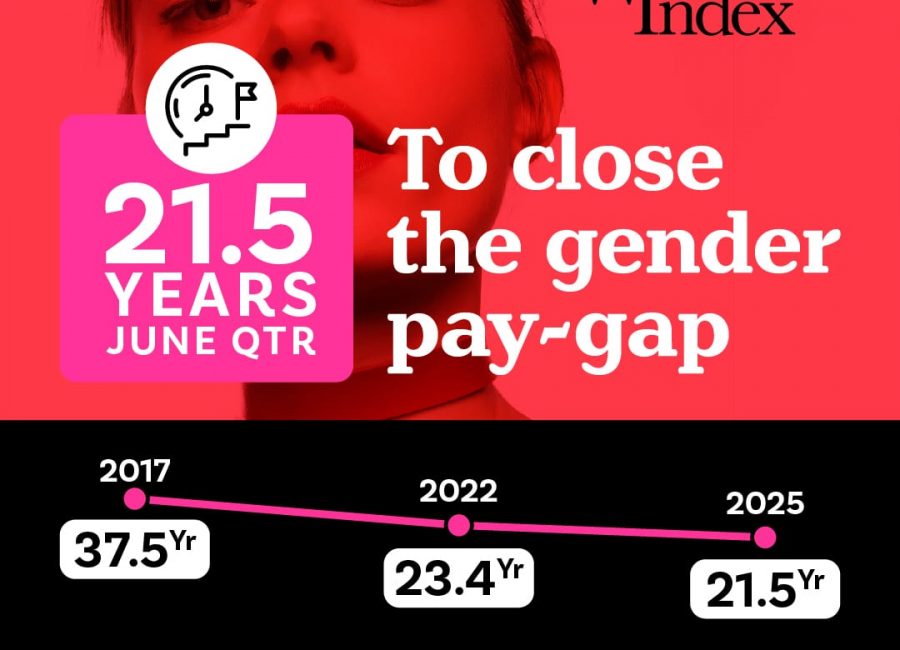Yes there’s some tax relief but make no mistake, Australian women have been largely forgotten in the 2018 Federal Budget.
There were hopes that Treasurer Scott Morrison would announce further details of a “significant funding” package to address the economic disadvantage many Australian women face. This was set to include measures to help more women back to work and build their “financial security and resilience”.
This follows a report in the Australian Financial Review on Monday which said the funding package would dwarf the $100 million announced by Malcolm Turnbull in one of his first acts as Prime Minister to tackle violence against women in 2015.
But the Treasurer’s Budget speech came and went on Tuesday without any mention of this “significant funding” to help women return to work.
Instead what we received was a Federal Budget with headline grabbing tax relief for middle to low income earners – brackets where most Australian women are – particularly at the lower end given broken work patterns and part-time career choices.
It now seems that the “significant funding” promise to help women could indeed come as an election sweetener later this year.
Indeed the Minister for Women and Minister for Revenue and Financial Services Kelly O’Dwyer said on Monday that the exact funding and policy measures of this co-called “significant funding” package would not be unveiled until the September sitting session of Parliament.
So the question is why promise “significant funding” for women the day before the Federal Budget and then do nothing?
Could it be that the government’s advisers or own ministers realised there was very little in the Budget to help women, so they coughed up an announcement the day before the Budget that just kicks the economic-disadvantage can further down the road.
The economic disadvantage of Australian women is very real in comparison to men. The average Australian woman earns 15.2 per cent less than men, and has about 30 per cent less in retirement savings.
These statistics have remained relatively stable despite record employment growth and participation by women in the full-time workforce.
According to a KPMG report titled: Ending workforce discrimination against women, if the gap between Australia’s male and female workforce participation rates could be halved, annual GDP would be $60 billion greater in 2038.
The fact that there are more people working has helped to provide the government with an economic boost, and a budget surplus is now closely in sight.
So how can women benefit from this budget? Let’s take a look.
Taxation
Treasurer Scott Morrison delivered a seven year plan for lower, fairer and simpler taxes.
Under this plan, Australians earning more than $41,000 will only pay 32.5 cents in the dollar all the way to the top marginal tax rate threshold which kicks in at $200,000.
The top threshold of the 32.5 per cent tax bracket will be further increased to $90,000 from 1 July 2018, having already been increased from $80,000 to $87,000 in 2016‒17.
It’s also expected that each tax time over the next four years, some 10 million taxpayers earning up to $125,000 a year will become eligible for a new “Low and Middle Income Tax Offset”, worth up to $530 a year.
Financial literacy
It’s not significant funding but the government says it will provide $10 million in funding for initiatives to put women in control of their financial lives, now and in the future, as part of a $50 million fund to promote the financial capabilities of Australian consumers.
This is likely to include marketing and educational materials to help women become more financially savvy on superannuation and money. For this, I give a big tick of approval… but note the detail is really lacking.
Health
The Government will provide $20.9 million over five years from 2017-18 to improve the health of Australian women and children.
This includes $5 million over two years from 2018-19 to develop a national digital baby book to enable Australians to use technology to support the vital first 2,000 days of a child’s life.
Plus $3 million over three years from 2018-19 to improve the long term health of women and their children through the development of better information on healthy eating and physical activity during pregnancy.
$1 million over three years from 2018-19 to increase awareness of Endometriosis among women and general practitioners.
$17.5 million over four years from 2017-18 for research into women’s health and research into maternal health and First 2,000 Days to address the underlying social determinants of health that impact on a child’s early days of life.
Violence against women
As part of the government’s ongoing commitment to reduce domestic violence, $6.7 million will be spent in 2018-19 towards Domestic Violence Response Training (DV-Alert) for community and frontline workers to support women and children affected by domestic and family violence.
The government will provide $11.5 million over two years from 2018-19 to enhance the services and capacity of 1800RESPECT.
Superannuation
No there wasn’t any promise of super payments on parental leave instead there was just streamlining of the system.
The Australian Taxation Office (ATO) will be given the capacity to actively reunite Australians with their lost and inactive superannuation, boosting their balances at retirement.
This will prevent people with multiple accounts from having their savings excessively eroded by fees, which will particularly benefit holders of inactive low balance accounts. These are typically young members, low income earners and seasonal workers.
The government will protect these balances by capping certain fees on accounts with balances less than $6,000 at 3 per cent.
Superannuation fund exit fees will also be abolished, which means you won’t be penalised for leaving a fund you no longer like.
And life insurances will also move to be opt-in for people with low balances and for those under 25 years of age.
Small businesses
We know that women are starting business at a faster rate than men, so there is some good news here too.
Small businesses will also benefit from the Government extending the $20,000 instant asset write–off for a further 12 months to 30 June 2019.
Education
There’s nothing really new in terms of brand new initiatives but funding has been set aside to encourage more women into STEM careers.
The Government will provide $4.5 million over four years from 2018-19 to encourage more women into science, technology, engineering and mathematics (STEM) education and careers.
The funding includes providing for the new Women in STEM Ambassador who will focus on promoting STEM in schools and to school-aged girls.












